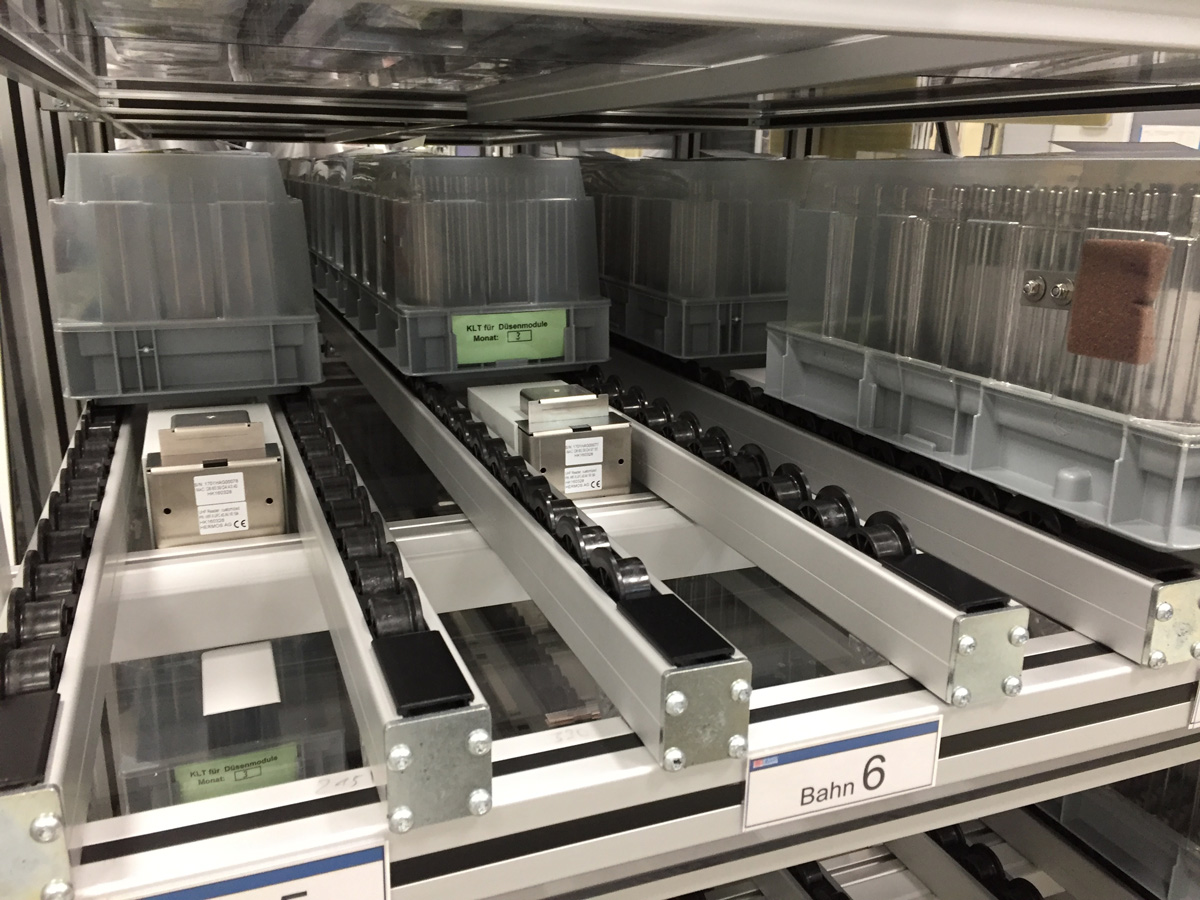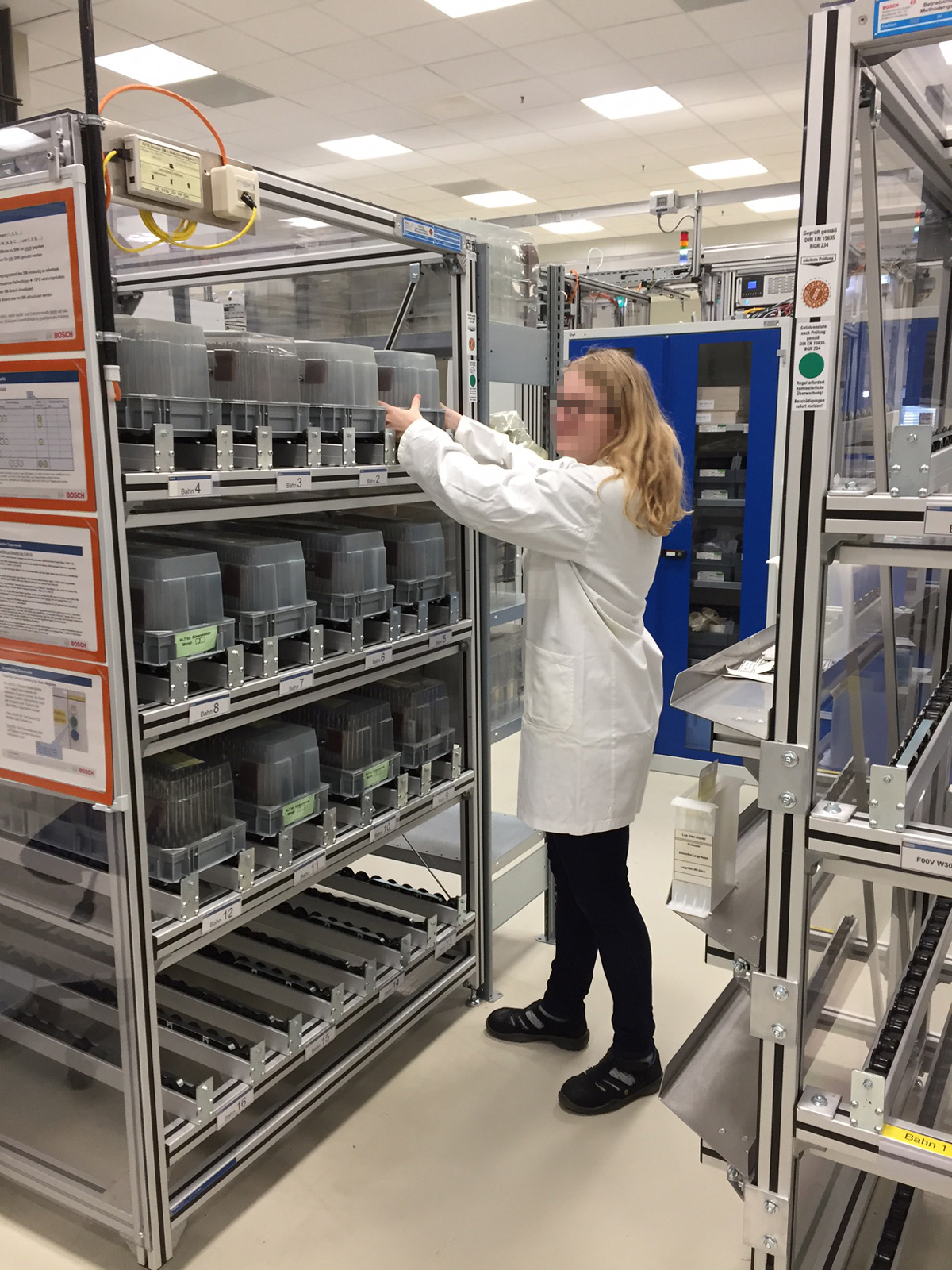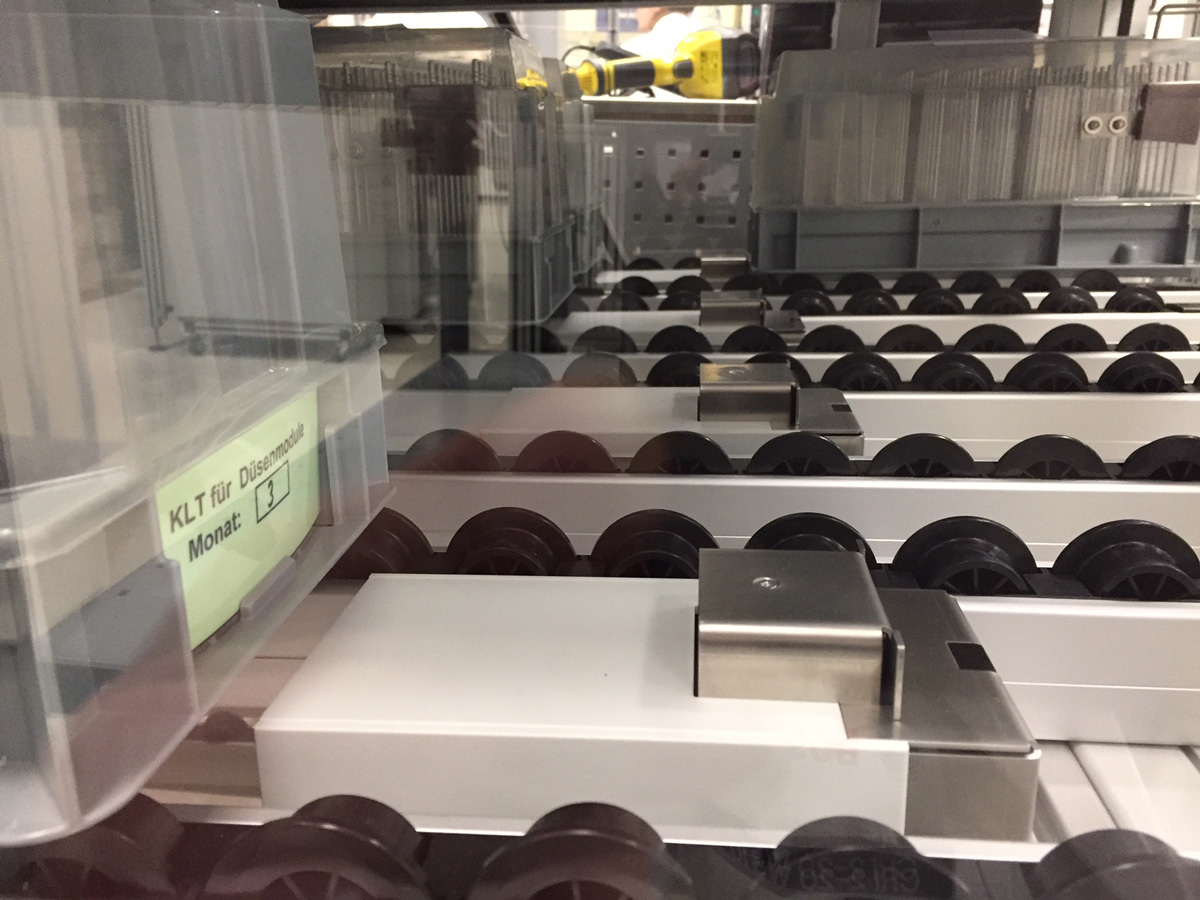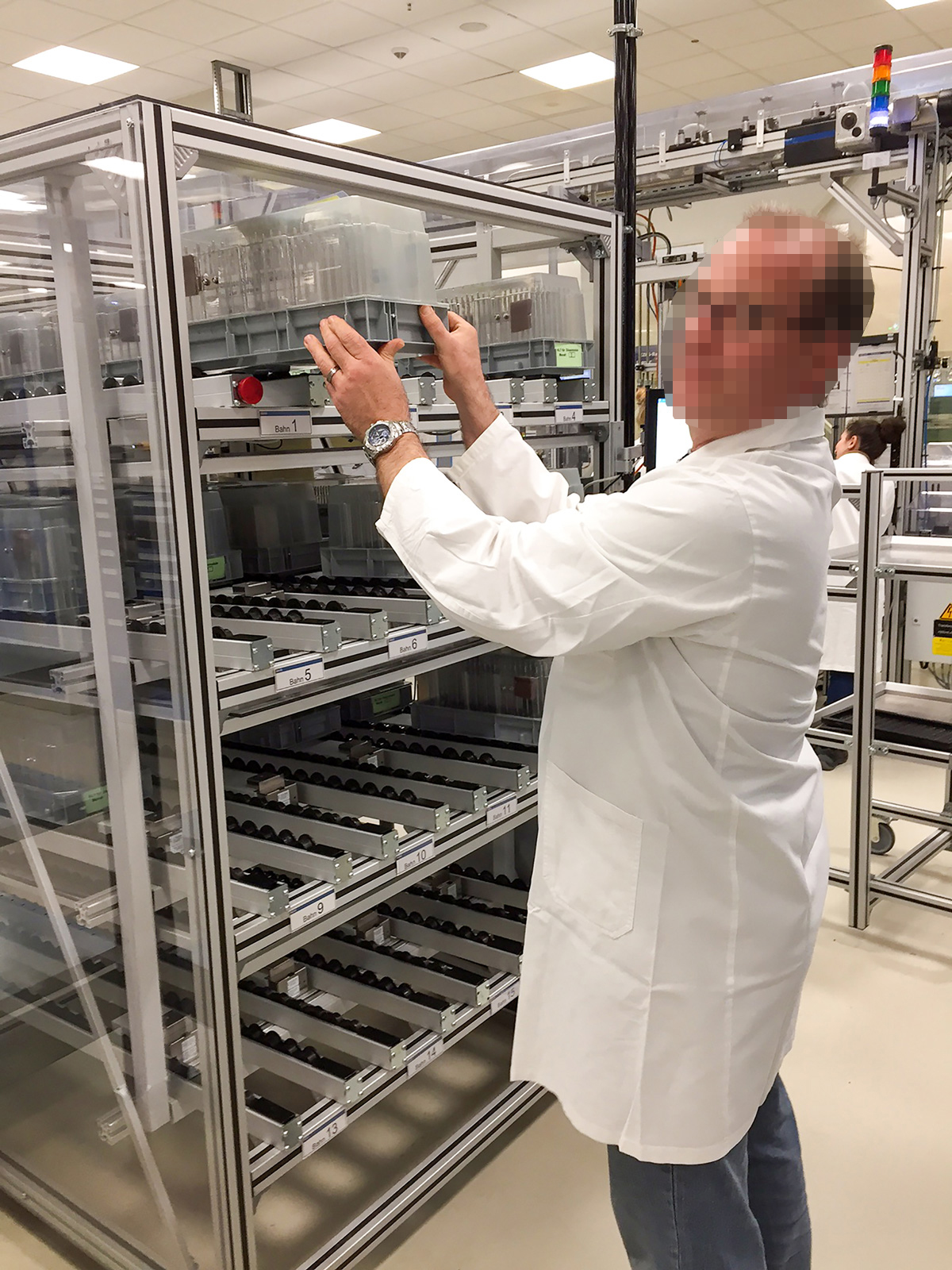Material stocks at a glance
In the overall project, a supermarket suitable for production was to be integrated, which automatically records the boxes equipped with transponders. The solution should be easy to install in existing flow racks of different manufacturers.
At Robert Bosch GmbH, existing flow racks have been retrofitted with HERMOS UHF reader technology. A production employee fills the Kanban rack with production goods. The system identifies the set Kanban boxes at the interlock and only allows valid material to enter the roller conveyor. The material entered is automatically transferred to the ERP system. Manual bookings are no longer necessary and thus incorrect bookings are virtually eliminated.
Customer problem
In the internal value streams of Robert Bosch GmbH, production supply is controlled via RFID. Raw materials, consumables and supplies, and packaging materials are reordered using RFID. In addition, value-added bookings in the production areas are triggered by RFID. The RFID tags are applied to plastic sleeves for kanban cards. The tags are captured by holding the tagged kanban card up to a UHF single-point reader. The employee must wait in front of the single-point reader for the booking confirmation from the ERP system. This imposes a manual, non-value-added additional effort that is also a source of error. The kanban cards are located on plastic KLTs (small load carriers), metal wash/set frames or on plastic blisters. The tagged containers are stored in defined stocks, the so-called supermarkets.
Customer requirement
In the overall project, a supermarket suitable for production was to be integrated, which automatically records the tagged boxes. The solution should be easy to install in existing flow racks of different manufacturers. The number of levels, roller conveyors and the length of the racks are flexible. The RFID tags can be attached to the top, back, left or right of the pack. The packs must be tracked specific to the lanes and RFID tags next to the racks must be safely hidden. The system should have a low-maintenance design and defects should be able to be repaired by a Bosch-internal department. On the touch panel, the current shelf contents are displayed in the main view. In a detailed view, status information and details of the stored goods can be displayed for each roller conveyor. Material removal is automatically detected by the system, the display on the touch panel is updated and the removed goods are reported to the ERP system. Manual bookings are no longer necessary here either.
Consistent solution
In order to implement a consistent solution for all flow rack types and rack sizes, the approach taken was to consider the rack lanes individually and to combine all rack lanes in one control unit. The components required for lane monitoring were to be integrated in a single unit as far as possible in order to keep the installation work required for equipping the racks to a minimum. To monitor the removal, an antenna at the web exit is dispensed with and the removal is monitored by means of a distance sensor. To minimize the cabling effort, only one cable was used between the roller conveyor and the control unit, which is used for both communication and power supply. By parameterizing the dimension (number of levels, number of roller conveyors per level), with the help of a flexible evaluation software, the combination to a rack is created. The shelf length should also be flexibly adjustable by parameterization. In addition, the option of an external antenna should be taken into account to ensure that the materials can be detected even if the kanban cards are positioned in an unfavorable position.
Every process is checked
At the entrance to each roller conveyor, an RFID unit specially developed by HERMOS is installed, with all the components necessary for recording the contents of the roller conveyor. The system checks each individual storage process so that only authorized material can be fed. An optical sensor detects the placement of a load carrier at the entrance to the runway. A UHF transponder attached to the load carrier automatically reads the material. After verification, the stop mechanism is released and the material can enter the roller conveyor. This ensures that only authorized material is fed.
All stock items in the roller conveyor are recorded in a database. In the event of a power failure, the stop mechanism automatically prevents material from being stored. Since the detection of the lane content is ensured by means of a distance sensor, no further RFID unit is required at the rack exit. Removed goods are automatically recognized by the system and even after a power failure, removed materials are automatically recognized and rebooked. Thus the security of the cycle is given at any time.
This standard system can be installed in new as well as in existing racks of different manufacturers. The combination of the individual lanes into one racking system is accomplished in one control unit. The cabling between the roller conveyor and the control unit is realized with only one Power over Ethernet (PoE) network cable to each roller conveyor. The power supply for the individual components is generated by an internal power supply unit. On the customer side, a LAN connection and a 230-volt power supply for the racking system are required. In the HERMOS evaluation software installed on the panel PC, the assignment of the individual lanes to the entire rack system is realized. By parameterizing the software, the dimension (number of levels, number of roller tracks per level) and the length of the rack can be set, and each rack track can be configured individually. Changes of the load carriers or modifications in the rack are thus possible at any time by parameterization in the evaluation software. Updates and parameter changes can also be carried out remotely. The easy integration into existing processes and the arbitrary expandability are further advantages of this flexible RFID solution. This solution can be applied to almost any material, for example raw or packaging materials. The data can be used for automatic orders, for example, and value-added bookings of the production areas are also possible. The RFID solution is integrated into the customer network via LAN or WLAN and can be individually connected to an ERP system.




